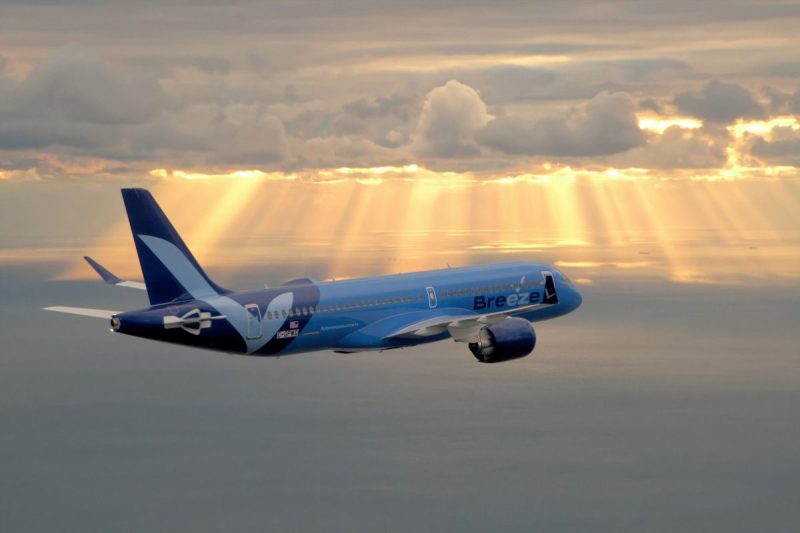Budget travel to underserved United States markets just got a little easier. Describing itself as the “Seriously Nice” airline, Breeze Airways announced that it plans to add 35 routes this spring and summer from 10 new cities, coast-to-coast. This nearly doubles the Breeze network to 77 routes, a massive expansion for the start-up that launched last May. Breeze, initiated by JetBlue CEO and aviation entrepreneur David Neeleman, began service primarily to eastern and southeastern U.S. cities and will soon feature routes between 28 cities in 18 states.
This will include service to the West coast with flights from San Francisco, Los Angeles, Las Vegas, and San Bernardino, California. This growth also will add to the Breeze imprint in the east and southeast with destinations to Savannah, Georgia; Jacksonville, Fort Myers, and Sarasota/Bradenton, Florida; Syracuse, New York; and Nashville.

To accommodate this new scope, Breeze has ordered 80 brand new Airbus A220-300 aircraft (with options for 40 more), with one per month due to be delivered over the next six years. This more than doubles the airline’s current fleet — from 13 to 30 Embraer 190 and 195 aircraft, four additional Embraer E-jets, and 13 Airbus A220s.
Initially, the A220 jets (an attractive model for its fuel efficiency and range) will sport 126 seats, including 36 first-class seats in a two-by-two configuration, 10 extra legroom seats, and 80 standard economy seats in a two-by-three configuration. Later deliveries will grow to 137 total seats. The A220 is a “game-changer,” according to Neeleman.
“The Airbus aircraft embodies the Breeze ideal of merging kindness with technology, pairing unrivaled passenger comfort with eco-friendly efficiency,” Neeleman said in a press release. “With the A220, Breeze is giving our guests the widest cabin, highest ceiling, largest windows, and biggest overhead stowage in this class, while still managing to burn 25% less fuel, with half the noise footprint of past generations.”
Seat pitch for a standard economy seat on the A220s is 30 inches, 29 inches on the E-190 aircraft, and 31 inches on the E-195s, while seat pitch for extra legroom is 32 in on the A220s, between 33 and 39 inches on the E-190s, depending on the row, and between 34 and 39 inches on the E-195s. First-class seats feature 39-inches of seat pitch, 20.5-inches of seat width, and special features, such as a footrest, for added comfort.
In addition, all seats on Breeze’s Airbus fleet are fitted with in-seat AC power and USB/C ports.
Breeze aims to make travel more digitally accessible and seamless to buy and to fly. Its sleek and simple app offers easy flight purchases and (eventually) guest access to global communications firm Viasat’s innovative in-flight connectivity on its Airbus A220 fleet. The first aircraft featuring Viasat connectivity is expected to enter service in October 2022. This will enable Breeze guests to enjoy high-quality entertainment and streaming content, work online, and stay in touch with family, friends, and co-workers, all on their personal electronic devices.
Breeze Airways fares begin at just $39 and there are no change or cancellation fees up to 15 minutes before scheduled departure. Unused funds from changes and cancellations are automatically saved in Breeze accounts and do not expire for 24 months.
Flights are now on sale at www.flybreeze.com and via the Breeze app.



